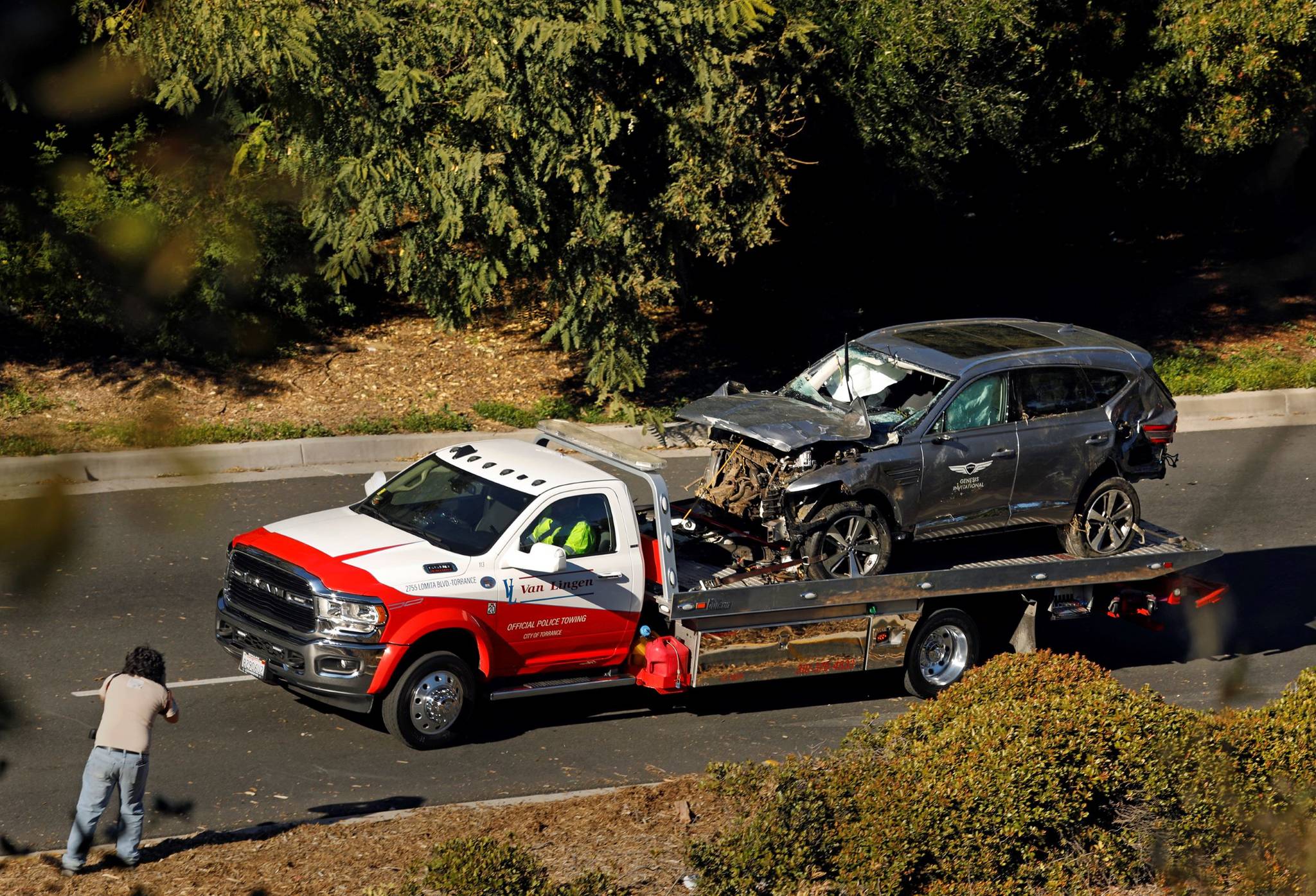By Richard Winton
Los Angeles Times
LOS ANGELES — Tiger Woods was driving at nearly twice the posted speed limit of 45 miles per hour before he hit a sharp turn and crashed on the Palos Verdes Peninsula in February, the Los Angeles County Sheriff said Wednesday in his long-awaited report on the accident that left the golf legend seriously injured.
The excessive speed Woods was driving in the borrowed Hyundai Genesis SUV was the single cause of the Feb. 23 crash that left him with serious ankle and leg injuries that threaten his legendary playing career, Sheriff Alex Villanueva said.
Investigators examined the SUV’s advanced data systems to determine the golfing legend reached speeds between 84 and 87 mph around the time of the crash in Rancho Palos Verdes. The sheriff released the information after Woods waived any objection to the release of the crash information.
Instead of reducing his speed into the curvy stretch of Hawthorne Boulevard, Woods was accelerating down the huge grade that sometimes catches drivers unaware of their growing momentum. Woods’ SUV crossed through two oncoming lanes and uprooted a tree before rolling over on a downhill stretch that police said is known for wrecks.
During the year before the rollover, 13 other motorists crashed on the stretch of Hawthorne and all but two were found at fault. Villanueva has said that it is easy for a driver to pick up speed on the downhill stretch with gravity alone creating momentum.
Woods had stayed in the L.A. area after hosting the Genesis Invitational and was on his way to the Rolling Hills Country Club around 7 a.m. on Feb. 23 for a film shoot after spending the night at the Terranea Resort in Rancho Palos Verdes. According to sources, witnesses described Woods as hurrying out of the resort and immediately accelerating hard away from the parking lot.
Woods is now in Florida recovering from multiple surgeries.
There have been growing questions about why more information had not been released about the crash.
Last week, Villanueva said that detectives have determined what caused the crash but declined to release details, citing unspecified privacy concerns.
Investigators did not seek a search warrant after the crash for Woods’ blood samples, which could be screened for drugs and alcohol, because the sheriff said they had no probable cause to believe the golf legend was under the influence. In 2017, Woods checked himself into a clinic for help in dealing with prescription drug medication after a DUI charge in his home state of Florida.
Detectives, however, did obtain a search warrant for the data recorder of the 2021 Genesis GV80 SUV, known as a black box. Villanueva, up until Wednesday, would not say what data had been found in the black box.
Woods told investigators he has no recollection of what happened.
Deputy Carlos Gonzalez, the lead crash investigator in the case and the first deputy to arrive at the scene, has said publicly that he did not observe anything that led him to suspect Woods was under the influence of anything and so he had no legal grounds for testing the golfer for alcohol, narcotics or prescription drugs. Woods was calm and lucid, he added. In February, Villanueva also said no evidence suggested the golfer’s actions rose to reckless driving.
The sheriff has also said the golf superstar did not get special treatment from his office.
“I know there’s been a lot of concern about, was he received any treatment any different than anybody else — he did not. He received the same treatment everybody else would receive,” Villanueva has said. “One, there’s no obvious evidence of impairment, and he’s a compound fracture in a horrendous scene. Our concern shifts to humanitarian, you know, life preservation, those kinds of things. And the accident becomes secondary.”



